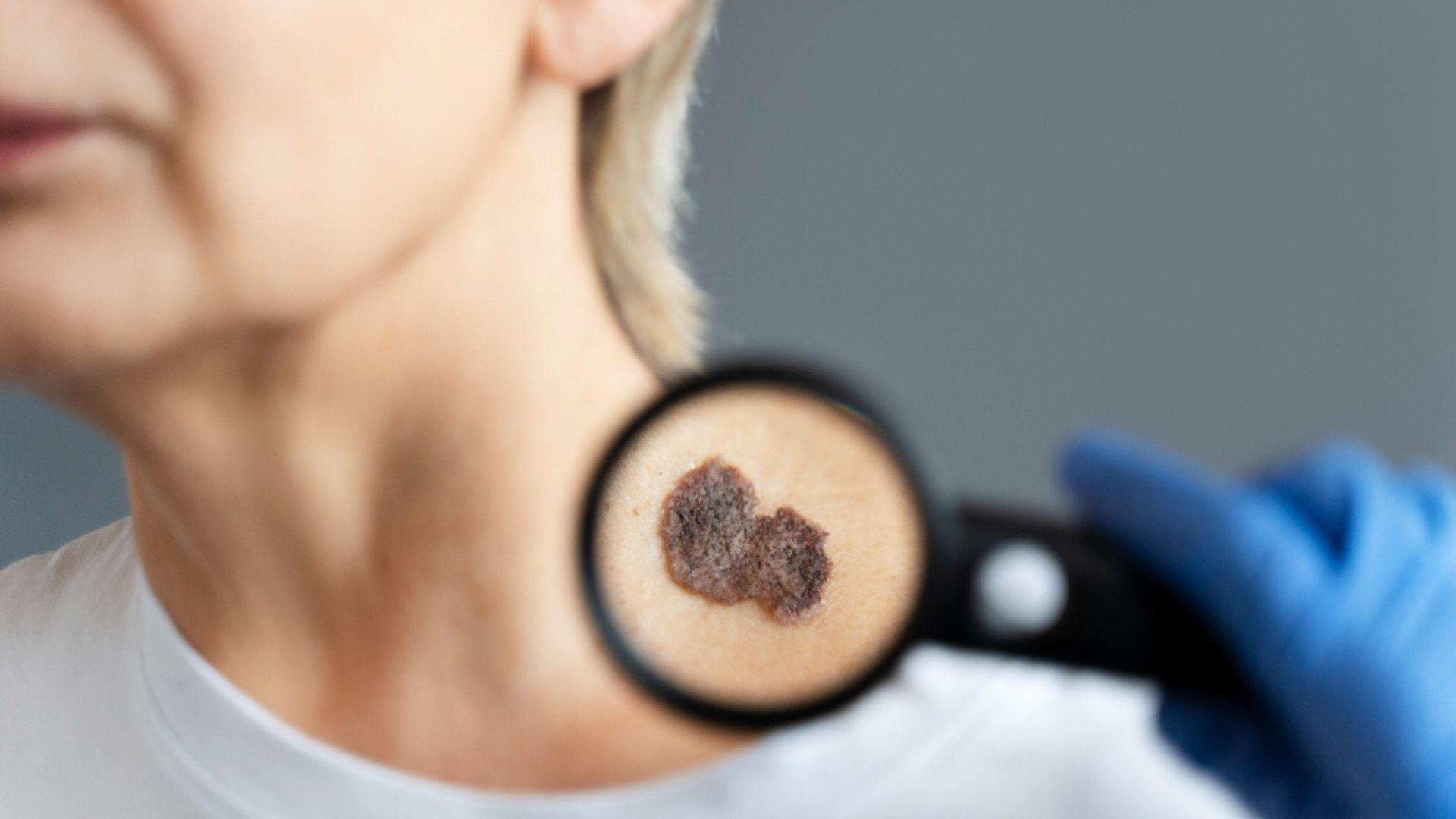

Benign Skin Tumours: Causes, Symptoms, and Treatment
A benign skin tumour is also known as a benign neoplasm or benign growth. It is a noncancerous collection of cells. Unlike cancerous tumours, this is slow-growing and doesn’t spread to other areas of the body. It may not cause symptoms, but a large benign tumour may press on nearby tissue and organs. Treatment includes a surgical procedure to remove the tumour.
This guide will inform you about causes, symptoms and treatment for benign skin tumours. If you want to get well-informed and take precautions before complications, then look for Skin cancer screening.
Although skin cancer screening is for malignant (cancerous) tumours, it often involves examining benign (non-cancerous) tumours as well, because some benign growths can look similar to cancerous ones.
What is a Benign Skin Tumour?
Benign tumours are noncancerous. They are a collection of abnormal cells that, unlike normal cells, multiply more than they should. Here are different types of benign skin tumours:
- Hamartomas are a common type of benign lung tumour.
- Fibromas or fibroids are benign tumours in the fibrous tissue.
- Adenomas are a type that start in epithelial tissue. The tissue covers organs and glands.
- Chondromas form in your cartilage.
Benign Skin Tumours: Causes, Symptoms and Treatment
| Causes | Symptoms | Treatment |
| Skin tags are associated with factors like genetic factors and hormonal changes. | Uterine fibroids are an example of tumours that cause symptoms like bleeding. | Factors like type and symptoms influence the treatment plan and management. You may not need treatment if you have a benign tumour that is not growing or causing any issues. |
| Epidermal cysts form when keratin, a protein, gets trapped under the skin, often due to blocked follicles. | Changes in skin, including developing new lumps or bumps, changes in existing moles such as altered size, shape or colour. The appearance of red or skin-coloured shiny bumps or dry, scaly patches is also a symptom of benign tumours. | Treatment for a benign tumour is needed when it causes symptoms like pain or neurological issues, significantly impacts quality of life, or there’s a concern about its potential to become cancerous |
| Long-term sun exposure can lead to actinic keratosis, a precancerous growth that can progress to squamous cell carcinoma. | Breathing issues are also one of the symptoms. Chrondromas and hamartomas can affect the airway and make it hard to breathe. | Treatment options include surgical procedures, cryotherapy, laser therapy, topical creams, electrodesiccation and shave excision. |
| Some tumours, like pyogenic granulomas, may form after a skin injury. | A meningoma may cause several symptoms, including headache and dizziness. These two are the most common ones. | The healthcare professional will examine your condition and then recommend the ideal treatment option for your condition. |
FAQs: Benign Tumours and More
Q1. What is a benign tumour?
A benign tumour is an abnormal growth of cells that does not invade surrounding tissues or spread to other parts of the body. They are distinct from malignant (cancerous) tumours because they have well-defined borders and a slow growth pattern.
Q2. What are the common types of benign tumours?
Lipomas, adenomas, fibromas, hemangiomas and meningiomas.
Q3. What are the symptoms of benign tumours?
A palpable lump or bump, pain from pressure on nerves or blood vessels, disruption of organ function and cosmetic concerns.
Q4. What diagnoses include?
In diagnosis, a healthcare professional will perform a clinical evaluation and may use imaging tests (like X-rays or MRIs). A biopsy, or tissue sample, may be necessary to confirm the benign nature of the growth.
Q5. When to see a healthcare professional?
Seek medical help for any persistent lump or bump, especially if it is causing discomfort, pain, or other concerning symptoms.
Q6. Is a surgical procedure necessary in benign tumours?
No, a surgical procedure is not always necessary for benign tumours, as many require no treatment and are managed with “watchful waiting”.
Q7. When is a surgical procedure needed for a benign tumour?
A surgical procedure for a benign tumour is needed when it causes symptoms like pain or pressure on organs, poses a risk to nearby structures, like as the brain or spinal cord, or is large enough to interfere with bodily functions.
Final Thoughts
Get skin cancer screening done at SCCQ. You need early expert intervention if you don’t want to let the issue grow. Early expert diagnosis ensures everything is okay and the treatment will be delivered on time.
If you see unusual growth or moles that are new or changing, you must note down these changes and consult a specialist as soon as possible. Remember, skin changes are the first signs of skin cancer, so don’t delay and report to the skin specialist.
References:

